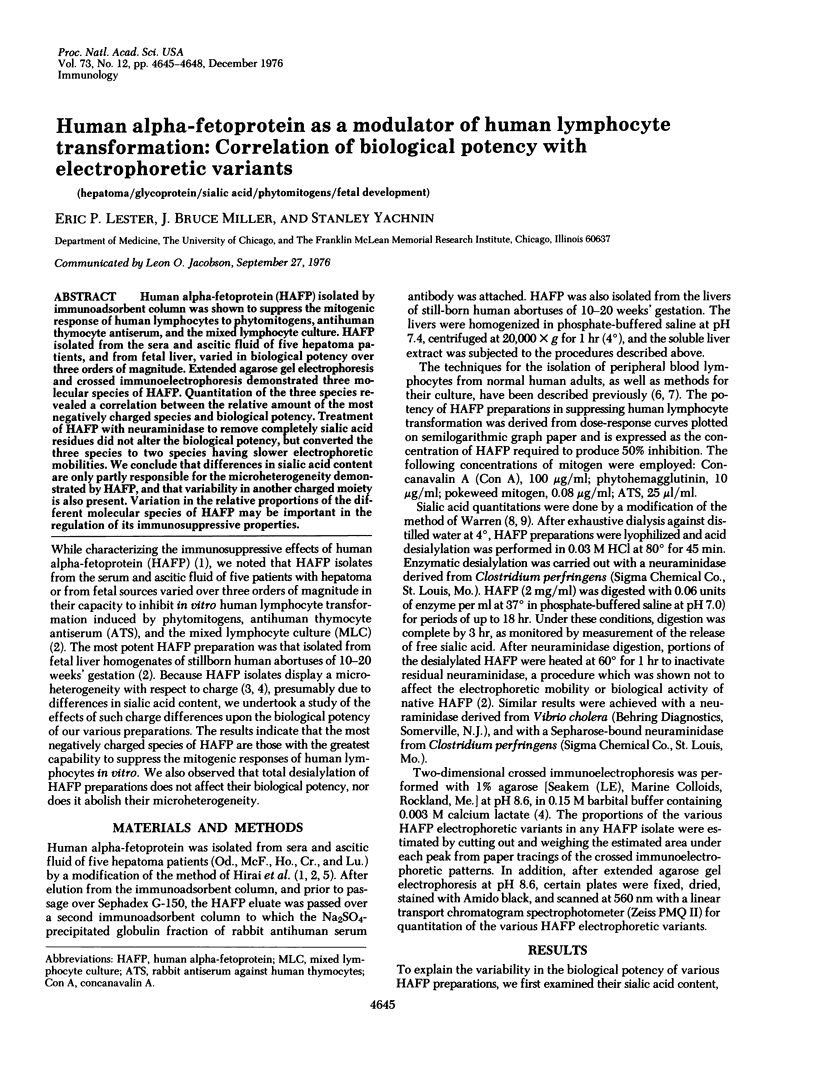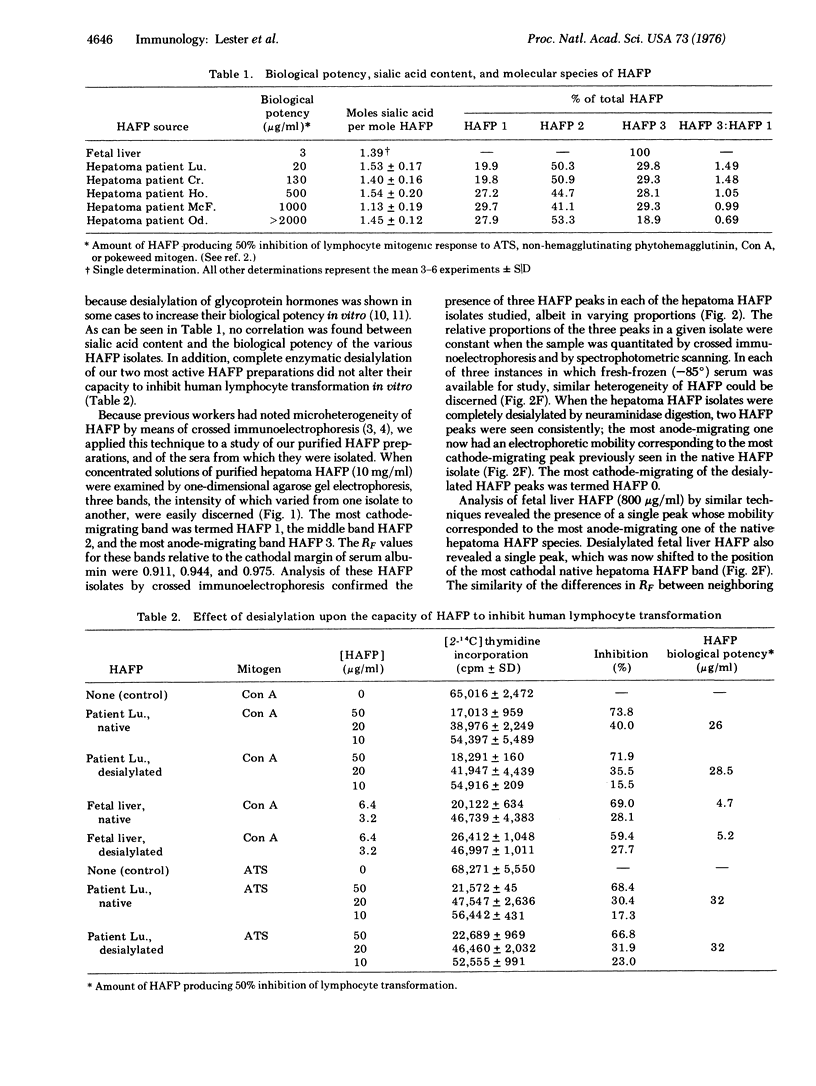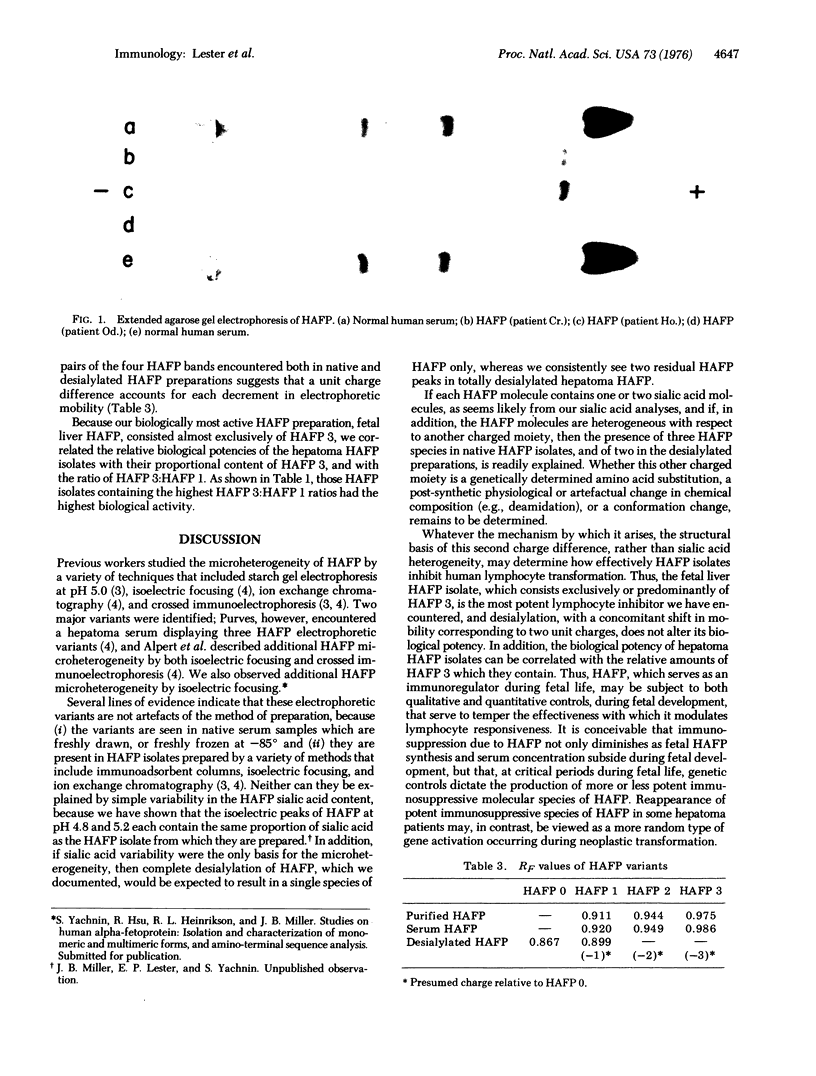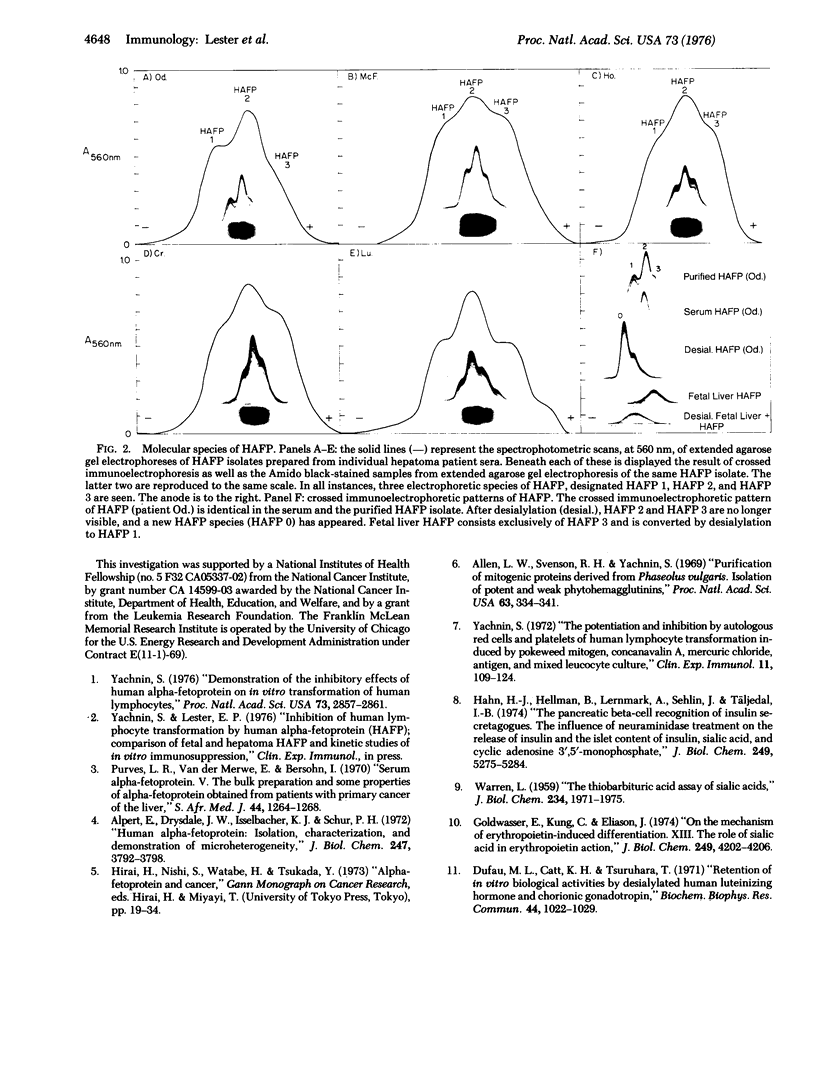Abstract
Human alpha-fetoprotein (HAFP) isolated by immunoadsorbent column was shown to suppress the mitogenic response of human lymphocytes to phytomitogens, antihuman thymocyte antiserum, and the mixed lymphocyte culture. HAFP isolated from the sera and ascitic fluid of five hepatoma patients, and from fetal liver, varied in biological potency over three orders of magnitude. Extended agarose gel electrophoresis and crossed immunoelectrophoresis demonstrated three molecular species of HAFP. Quantitation of the three species revealed a correlation between the relative amount of the most negatively charged species and biological potency. Treatment of HAFP with neuraminidase to remove completely sialic acid residues did not alter the biological potency, but converted the three species to two species having slower electrophoretic mobilities. We conclude that differences in sialic acid content are only partly responsible for the microheterogeneity demonstrated by HAFP, and that variability in another charged moiety is also present. Variation in the relative proportions of the different molecular species of HAFP may be important in the regulation of its immunosuppressive properties.
Full text
PDF



Images in this article
Selected References
These references are in PubMed. This may not be the complete list of references from this article.
- Allen L. W., Svenson R. H., Yachnin S. Purification of mitogenic proteins derived from Phaseolus vulgaris: isolation of potent and weak phytohemagglutinins possessing mitogenic activity. Proc Natl Acad Sci U S A. 1969 Jun;63(2):334–341. doi: 10.1073/pnas.63.2.334. [DOI] [PMC free article] [PubMed] [Google Scholar]
- Alpert E., Drysdale J. W., Isselbacher K. J., Schur P. H. Human -fetoprotein. Isolation, characterization, and demonstration of microheterogeneity. J Biol Chem. 1972 Jun 25;247(12):3792–3798. [PubMed] [Google Scholar]
- Dufau M. L., Catt K. J., Tsuruhara T. Retention of in vitro biological activities by desialylated human luteinizing hormone and chorionic gonadotropin. Biochem Biophys Res Commun. 1971 Sep;44(5):1022–1029. doi: 10.1016/s0006-291x(71)80188-2. [DOI] [PubMed] [Google Scholar]
- Goldwasser E., Kung C. K., Eliason J. On the mechanism of erythropoietin-induced differentiation. 13. The role of sialic acid in erythropoietin action. J Biol Chem. 1974 Jul 10;249(13):4202–4206. [PubMed] [Google Scholar]
- Hahn H. J., Hellman B., Lernmark A., Sehlin J., Täljedal I. B. The pancreatic beta-cell recognition of insulin secretogogues. Influence of neuraminidase treatment on the release of insulin and the islet content of insulin, sialic acid, and cyclic adenosine 3':5'-monophosphate. J Biol Chem. 1974 Aug 25;249(16):5275–5284. [PubMed] [Google Scholar]
- WARREN L. The thiobarbituric acid assay of sialic acids. J Biol Chem. 1959 Aug;234(8):1971–1975. [PubMed] [Google Scholar]
- Yachnin S. Demonstration of the inhibitory effect of human alpha-fetoprotein on in vitro transformation of human lymphocytes. Proc Natl Acad Sci U S A. 1976 Aug;73(8):2857–2861. doi: 10.1073/pnas.73.8.2857. [DOI] [PMC free article] [PubMed] [Google Scholar]
- Yachnin S. The potentiation and inhibition by autologous red cells and platelets of human lymphocyte transformation induced by pokeweed mitogen concanavalin A, mercuric chloride, antigen, and mixed leucocyte culture. Clin Exp Immunol. 1972 May;11(1):109–124. [PMC free article] [PubMed] [Google Scholar]




